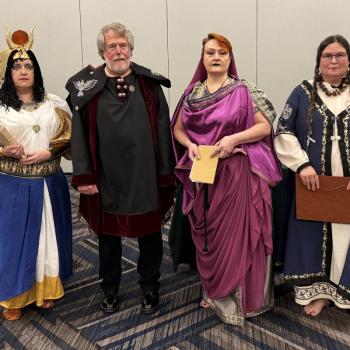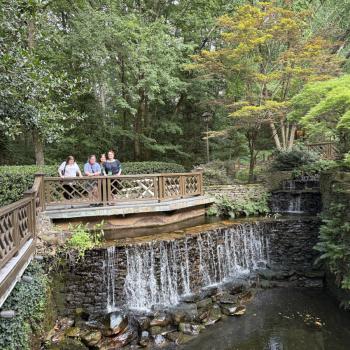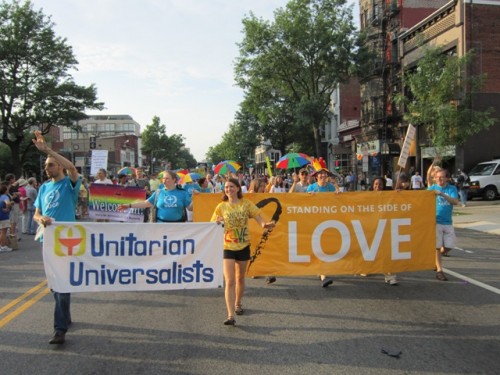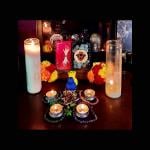The imposing cross that stands on Mt. Soledad in California was dedicated to “Our Lord and Savior Jesus Christ” in 1954. For decades it was known as the “Mt. Soledad Easter Cross” and was the site of Christian services (and may even have been a reminder of Christian triumphalism to area Jews). After initial litigation was filed in the late 1980s against the cross standing on public lands, it was dubbed a veteran’s memorial, and expensive “improvements” were made to stress this new role. Why was a Christian cross, obviously erected for religious purposes, suddenly named a war memorial? In hopes of magically transforming it from a religious icon into a secular memorial symbol. A tactic that initially worked.
Litigation over the 43-foot-tall Mt. Soledad cross has been under way for nearly 20 years. Several federal courts have ruled against its display on city property. In an effort to save the cross, the federal government acquired the land underneath the cross in 2006. Legal action proceeded against the federal government’s ownership of the towering religious symbol. In July of 2008, U.S. District Judge Larry Alan Burns ruled that the cross “communicates the primarily non-religious messages of military service, death and sacrifice” and can remain on public property.
How can a Christian cross communicate a non-religious message of military service, death, and sacrifice to non-Christian soldiers? The answer is it can’t, it’s a purely political ploy to exploit American patriotism in order to “secularize” a religious symbol so that it can remain standing despite complaints from atheists, agnostics, religious minorities, and church-state separation activists. Here’s Supreme Court Justice Scalia showcasing how the argument typically goes.
Mr. Eliasberg said many Jewish war veterans would not wish to be honored by “the predominant symbol of Christianity,” one that “signifies that Jesus is the son of God and died to redeem mankind for our sins.” Justice Scalia disagreed, saying, “The cross is the most common symbol of the resting place of the dead.” “What would you have them erect?” Justice Scalia asked. “Some conglomerate of a cross, a Star of David and, you know, a Muslim half moon and star?” Mr. Eliasberg said he had visited Jewish cemeteries. “There is never a cross on the tombstone of a Jew,” he said, to laughter in the courtroom. Justice Scalia grew visibly angry. “I don’t think you can leap from that to the conclusion that the only war dead that that cross honors are the Christian war dead,” he said. “I think that’s an outrageous conclusion.”
You see, there are a lot of Christian crosses on the graves of dead soldiers, because there are a lot of Christians, ergo, it must be a common symbol of “the resting place of the dead” (repeat sentence until your rhetorical opponent grows tired). In 2010 the Supreme Court took a step towards secularizing the cross with its decision in Salazar v. Buono, which challenged the constitutionality of a eight-foot Christian cross war memorial situated on public lands in California’s Mojave National Preserve. Justice Kennedy acknowledged that the cross is “a Christian symbol,” but this particular cross didn’t mean to send “a Christian message” (how, I’m not entirely sure, but this was a mess of a decision, with six separate opinions filed), and thus was constitutional. Only Justice John Paul Stevens, a wartime veteran, had the courage to call a Christian cross a Christian cross.
“The nation should memorialize the service of those who fought and died in World War I … But it cannot do so lawfully by continued endorsement of a starkly sectarian message.”
However, while there was some secularizing wiggle room in Salazar v. Buono, that wasn’t the case with the Soledad cross. In the beginning of 2011 the 9th Circuit Court of Appeals ruled that the memorial was unconstitutional, citing its long history of being a sectarian religious symbol.
“Much lore surrounds the Cross and its history. But the record is our guide and, indeed, except for how they characterize the evidence, the parties essentially agree about the history. A cross was first erected on Mount Soledad in 1913. That cross was replaced in the 1920s and then blew down in1952. The present Cross was dedicated in 1954 “as a reminder of God’s promise to man of everlasting life and of those persons who gave their lives for our freedom . . . .” The primary objective in erecting a Cross on the site was to construct “a permanent handsome cast concrete cross,” but also “to create a park worthy of this magnificent view, and worthy to be a setting for the symbol of Christianity.” For most of its history, the Cross served as a site for annual Easter services. Only after the legal controversy began in the late 1980s was a plaque added designating the site as a war memorial, along with substantial physical revisions honoring veterans. It was not until the late 1990s that veterans’ organizations began holding regular memorial services at the site.“
That ruling was appealed, and on Monday, the Supreme Court denied certiorari, leaving the 9th Circuit’s decision in place. Which means one of two things has to happen. Either the cross has to be taken down, or the memorial has to be modified so as to pass constitutional muster. A process that will necessitate even more litigation. Supporters of the cross are already calling for the Department of Justice to raise the issue, as allowed in the 9th Circuit’s decision.
Rep. Duncan Hunter (R-Alpine), in urging the Department of Justice to continue the legal fight, said the government should preserve “such a historic memorial that pays tribute to the service and sacrifice of America’s veterans.”
Notice that cross supporters now completely ignore the history of this monument, invoking veterans to cloud the issue, despite the fact that it this challenge was brought by the Jewish War Veterans, who obviously don’t feel a large Christian cross pays tribute to their sacrifice. In addition, I somehow doubt these cross secularizers are going to stand in our corner when someone tries to erect a “secular” Wiccan or Asatru war dead memorial. Nor would anyone try to argue for a “secular” Jewish star of David, or “secular” Muslim crescent (particularly not the latter in our current climate). They would argue that these symbols are sectarian, and could not represent them. It’s all part of the hypocrisy that comes with the privilege of being the overwhelming majority.
To many Christians their immense privilege seems invisible. They don’t understand how much of our society panders to their unspoken power. The churches on every corner, the holidays and celebrations structured around Christian dates, the pandering of politicians, the ceremonial deism that acts as a placeholder for state-sponsored religion. Even our vernacular is colored by Christianity: “God bless you,” “we’ll pray for you,” “I’m in heaven,” or even “go to hell.” Yet despite this, many Christians, particularly conservative Christians, have a major investment in seeing themselves as part of a persecuted minority. This was reinforced for me in the comments section of a recent post at the journalism commentary site Get Religion. There, I was informed that Michele Bachmann was part of a religious minority, and that due to mainstream media criticism “one has to speculate that perhaps Christians are a small minority in the United States.”
Eventually, like the memorial crosses erected in Utah, this Soledad cross will have to be removed. We can no longer claim to be a secular, pluralistic nation while winking at those who crave a “Christian Nation.” The time of pretending the cross isn’t the cross, or that monuments to the 10 commandments are religiously neutral, are quickly coming to an end. Public spaces will either have to accommodate all the other faiths that inhabit this country, or leave such expressions to the private sphere. While Christians may not think twice about a “secular” cross, it’s not a luxury many non-Christians have.















